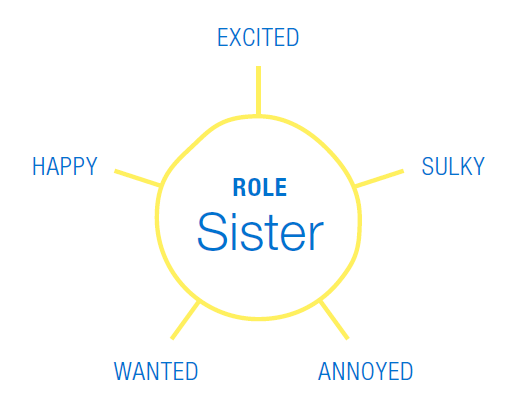This lesson explores the concepts of ‘emotional awareness’ and ‘self-regulation’, assisting students to understand that resilient people don’t get ‘stuck’ in an emotion. They use self-regulation so that their feelings don’t prevent them from coping with the situation and moving forward. Although they might feel sad or scared, these feelings don’t prevent them from coping with the situation and moving forward.

Year level
7-10

Duration
60 minutes

Type
In class activity

SEL Competencies
Self-awareness
Social awareness
Relationship skills
Responsible decision-making
Learning intention
Students can recognise that resilient people do show their emotions. It's a normal part of life to feel sad or scared or anxious when going through a tough time.
Key outcomes
By the end of the lesson, students will be able to:
explain that being resilient isn't about keeping things inside; it's about expressing how you feel and moving forward
understand that expressing your own emotions is a key ingredient of resilience
reflect on how they feel in different situations.
Materials needed
Post-it Notes
Butcher’s paper
Coloured pens/textas
Soft small ball (x3)
Whiteboard
Mapped to
Australian Curriculum Health and Physical Education
Evaluate emotional responses in different situations to refine strategies for managing emotions (AC9HP10P06)
Australian Curriculum: General Capabilities
Personal and Social Capability:
Social awareness
Social management
Self-awareness
Self-management
NSW PDHPE Syllabus
Examines and evaluates strategies to manage current and future challenges (PD4-1)
Demonstrates self-management skills to effectively manage complex situations (PD4-9)
Assesses their own and others’ capacity to reflect on and respond positively to challenges (PD5-1)
Assesses and applies self-management skills to effectively manage complex situations (PD5-9)
Victorian Curriculum: Health and Physical Education
Analyse factors that influence emotions, and develop strategies to demonstrate empathy and sensitivity (VCHPEP128)
Evaluate situations and propose appropriate emotional responses and then reflect on possible outcomes of different responses to health and wellbeing (VCHPEP147)
Activity 1
Activity: Toss the ball
10 minutes
Students to stand in a circle.
Ask them to think about emotions. What are the things that come to mind when thinking about emotions?
One student starts with the ball and throws it to another student, sharing what their thought has been.
Continue until all students have received the ball and shared a thought.
For an added challenge, introduce more than one ball.
Activity 2
Group activity: What are emotions?
10 minutes
In small groups, students write examples of emotions on Post-it Notes.
Ask students to group the emotions into types.
Ask students to share back to the class, answering these questions:
What groups of emotions have you felt?
Why did you feel them?
Activity 3
Activity: Connecting feelings with emotions
10 minutes
Explain to students that recording their emotions will help them understand how they respond in certain situations (i.e. how situations make them feel), and how best to move forward.
Draw a diagram recording the emotions you feel in different roles you have in your life. (An example is provided.)
Recording how we feel helps us to be aware of our emotional responses.
Activity 4
Student reflection: Feelings journal
15 minutes
Students draw a table with the following column headings:
What was happening?
What was I feeling?
Was it negative or positive?
How did I react?
Was there a physical reaction?
What will I do next time?
For each row, students identify a time – for example, ‘Yesterday after school’ or ‘Saturday morning’ – and reflect on how they were feeling at that time.
Activity 5
Class discussion: Feelings and thoughts
15 minutes
Ask students the following questions:
Do we always feel the same?
How can our emotions affect what we do?
What are some important things to remember if we’re feeling a certain way?





